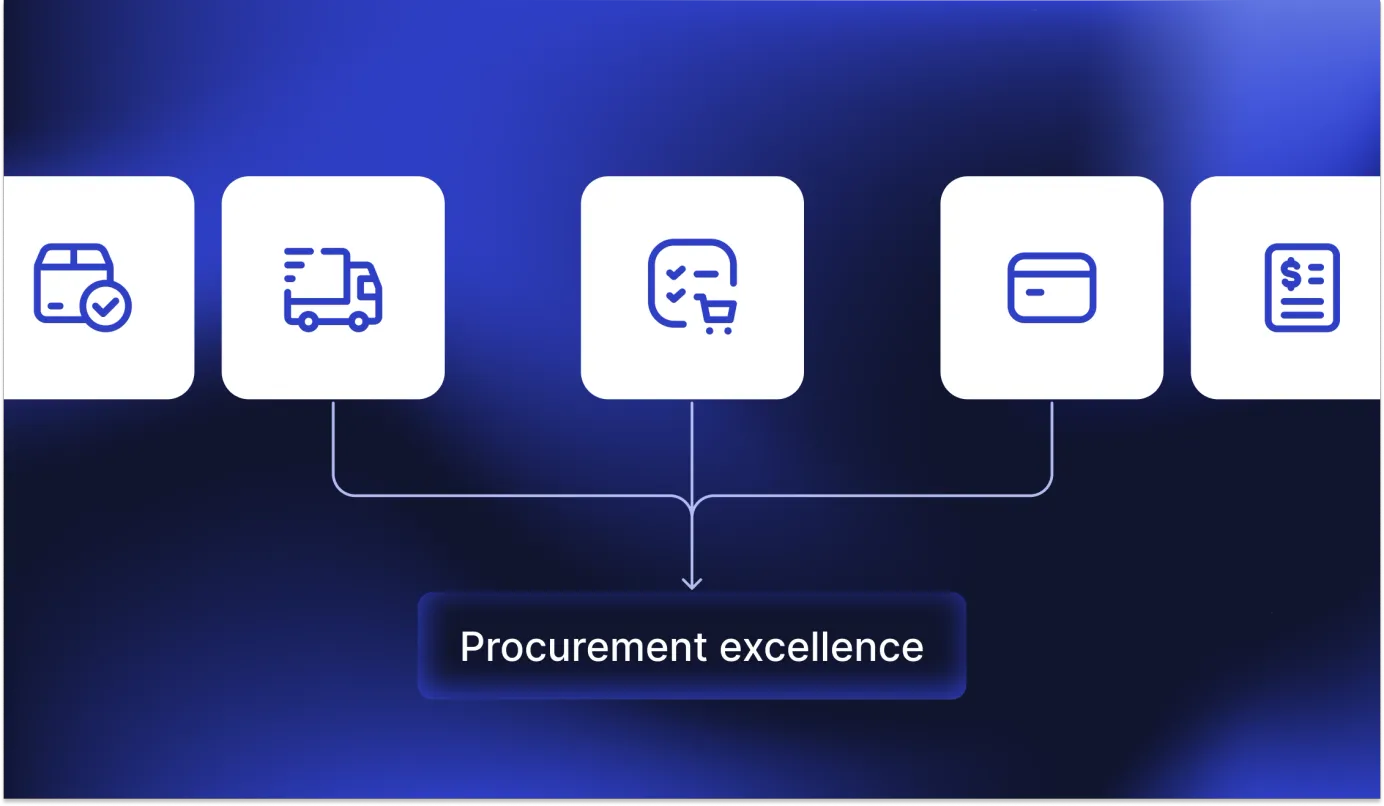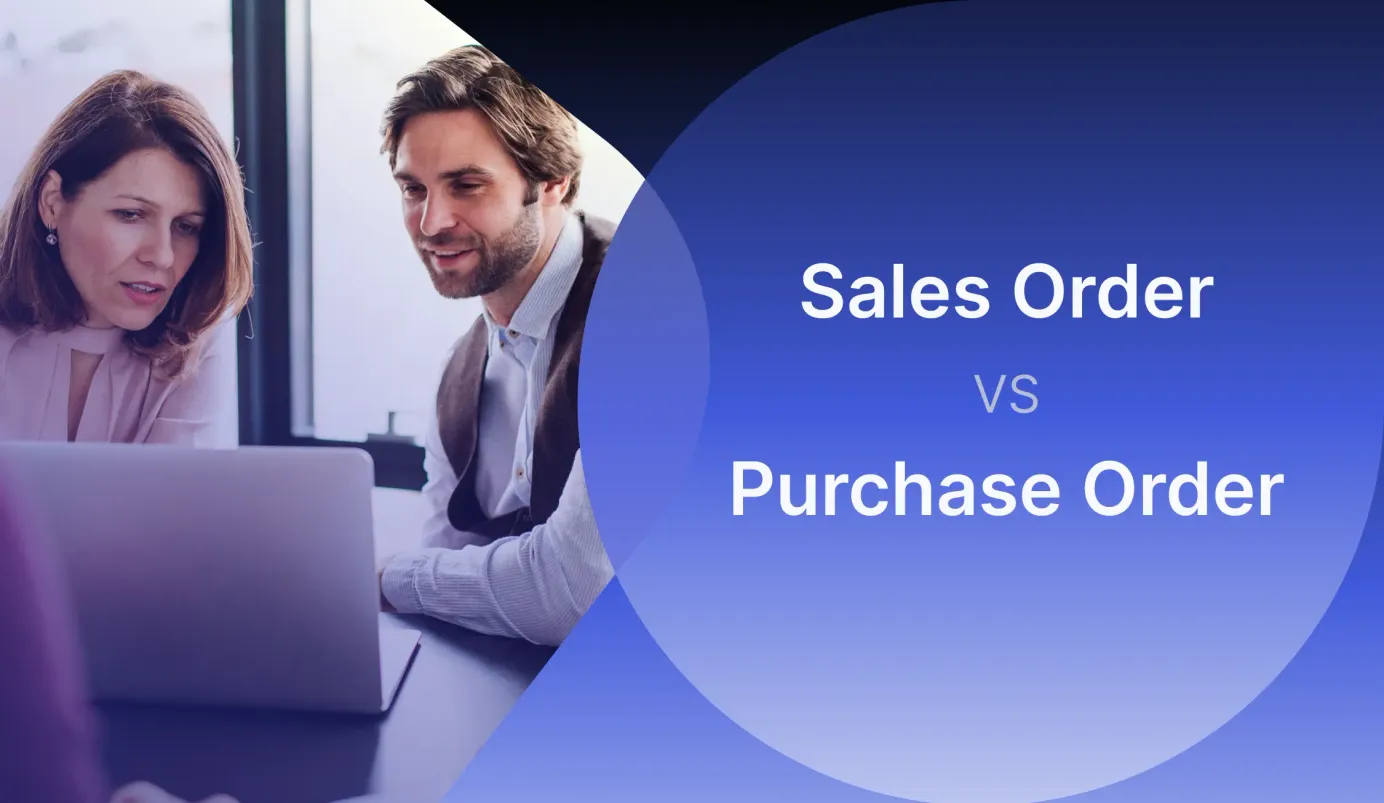
13 min read
Sales Order vs. Purchase Order: A Beginner's Guide
Think back to the last time your business hit a procurement roadblock. Perhaps it was a mixed-up purchase order or an inaccurate sales order—pricey yet worthwhile lessons.
In this guide, we walk you through basic procurement concepts (e.g., what a sales order is vs. a purchase order and how they differ from invoices and quotes). It will also include step-by-step examples of effective sales orders vs. purchase orders.
Keep reading to learn:
What Is a Sales Order?
What Is a Purchase Order?
Sales Order vs. Purchase Order vs. Quote vs. Invoice: Differences Explained
Sales Order vs. Purchase Order
Sales Order vs. Invoice
Quote vs. Sales Order
Purchase Orders vs. Sales Orders in Procurement
How Do Sales Order vs. Purchase Order Function Together?
Types of Sales Orders
Example of a Sales Order
Types of Purchase Orders
Example of a Purchase Order
Frequently Asked Questions
Sales Order Meaning Clarified
A sales order is a legal document sent to a customer by a seller that confirms the purchase of goods or services. Sales orders contain necessary information about the transaction, such as quantity, price, and quality of the delivered goods or services rendered.
Key components of sales orders are:
- Customer information.
- Order details.
- Shipping address, method, and delivery date.
- Payment method, due date, and any discounts or penalties.
- Order number.
- Date and delivery timelines.
- Other terms and conditions.
Purchase Order Meaning Clarified
A purchase order is a document a buyer sends to a supplier or vendor to request the goods or services formally. Usually dispatched from an organization's purchasing department, it includes what product or service you need, the number of each item you want, and the price you are willing to pay.
Key components of a purchase order are:
- Purchase order number.
- Order date for deadlines & records.
- Name, address, and contact of a buyer.
- Name, address, and contact of the recipient.
- Item details (description, quantity, unit, and total price).
- The sum of all costs for payment planning.
- Payment and delivery terms.
- Other policies and instructions.
- Tax exemption forms (if available).
Sales Order vs. Purchase Order vs. Quote vs. Invoice: Differences Explained
Quotes and purchase orders lay the groundwork for a transaction. A quote (from the seller) serves as a "price proposal"—a non-binding estimate that helps the buyer understand costs and terms. For example, a seller might quote 100 widgets for $1,000. If the buyer agrees, they issue a purchase order (PO), a formal, binding commitment to buy those widgets at the quoted price. Once the seller accepts the PO, the deal is locked in.
This is where understanding purchase order vs. sales order becomes essential. A purchase order is initiated by the buyer to request goods or services, while a sales order (SO) is created by the seller to confirm and process the request. The sales order ensures accuracy in fulfillment, detailing when and how the order will be completed (e.g., "100 widgets will be delivered by Friday").
Once the goods or services are delivered, the seller issues an invoice, signaling the final step—payment. For instance, the invoice might state, "Pay $1,000 for 100 widgets by April 1." You can match invoices to a corresponding PO during PO invoice processing.
Quick Takeaway: When comparing purchase order vs. sales order, think of the PO as the buyer's commitment to purchase and the SO as the seller’s confirmation to fulfil the order. Quotes and POs establish the terms, while sales orders and invoices bring the transaction to completion.
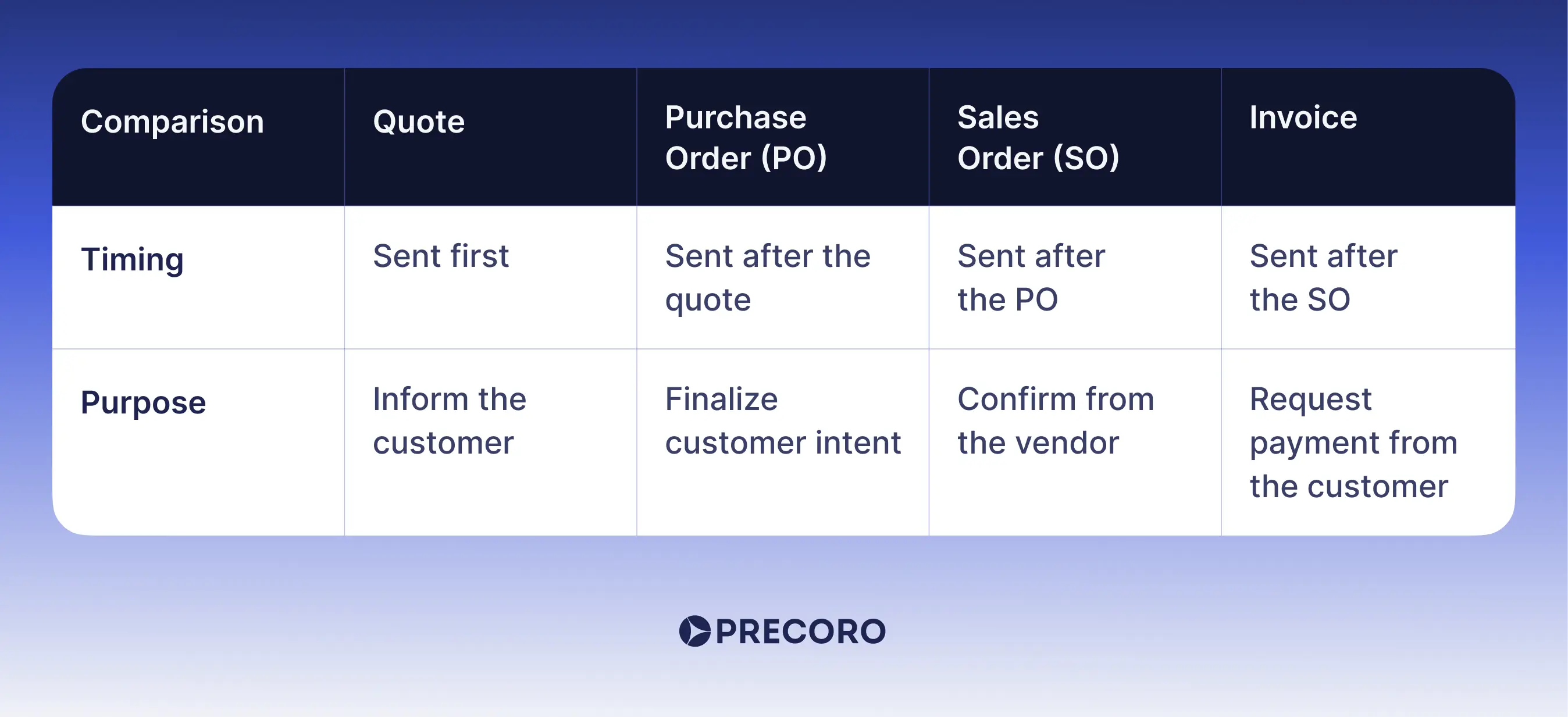
Sales Order vs. Purchase Order: How to Choose, When to Use
Purchase and sales orders reflect two sides of a transaction—the buyer’s and seller’s perspectives.
A buyer sends a purchase order to request products or services from a supplier. The document details items, quantities, and prices, forming a binding purchase intent.
Example: A business might issue a purchase order for 200 office supplies. Use this document to state your needs and track your spending.
Once a seller receives a purchase order or a direct request from a buyer, they create a sales order. This document confirms the sale and outlines the fulfillment details.
Example: If a vendor receives a purchase order for 200 office supplies, they generate a sales order to process the transaction. Choose this option to document the sale and initiate the delivery process.
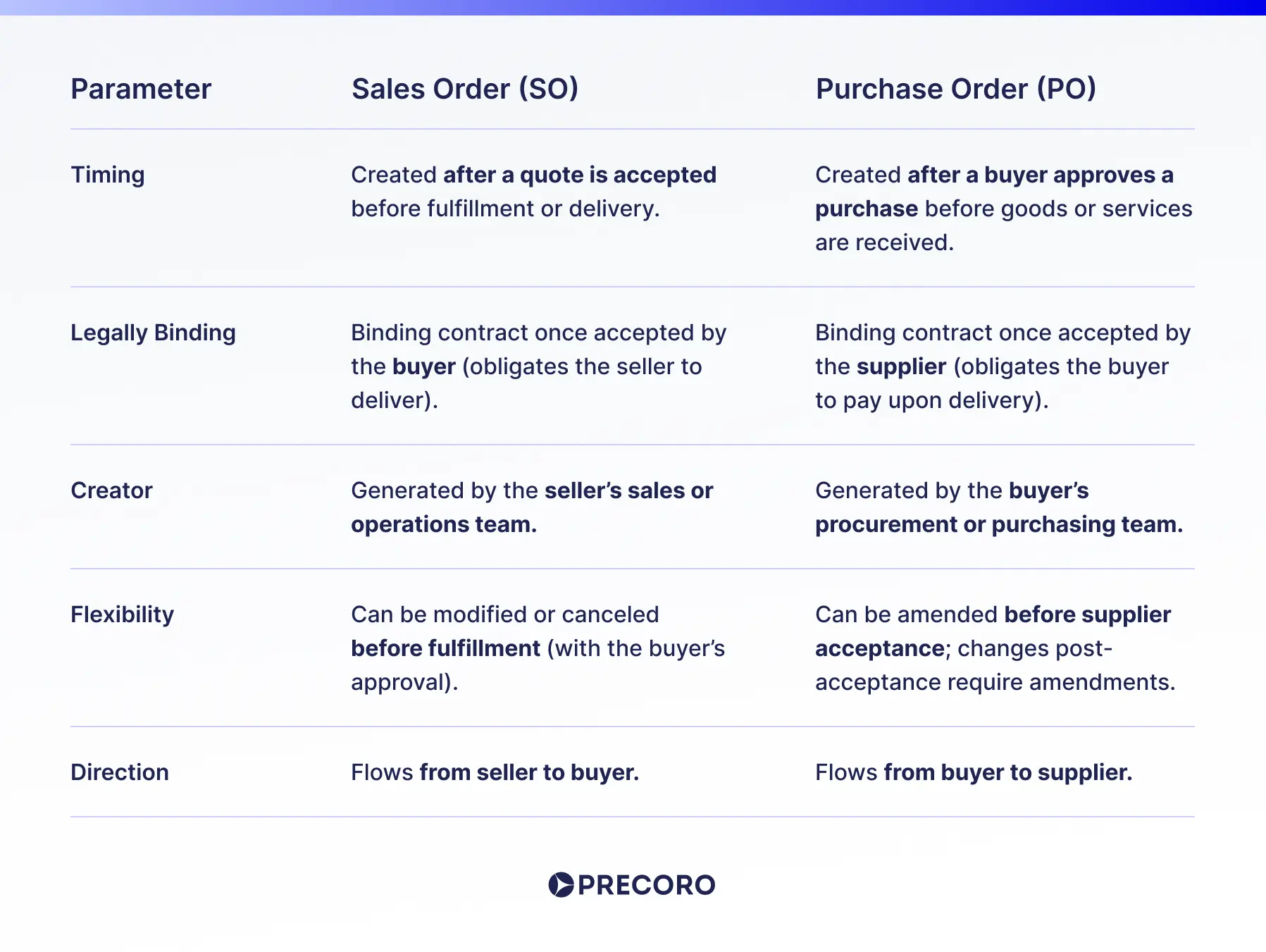
Note! In essence, when comparing sales order vs. purchase order, the PO drives the buyer's request, while the SO powers the seller's response.
Sales Order vs. Invoice: How to Choose, When to Use
Invoices and sales orders both relate to a sale but serve separate roles at different points. A sales order is created when a buyer commits to a purchase before delivery begins. It locks in the details—items, quantities, and terms—and guides the seller's next steps. For example, if a seller receives an order for 50 chairs, they document it with a sales order to arrange delivery. Use this document to clarify the sale and manage fulfillment.
Once the goods or services have been delivered, the seller sends an invoice. This document specifies the amount owed, payment terms, and deadline.
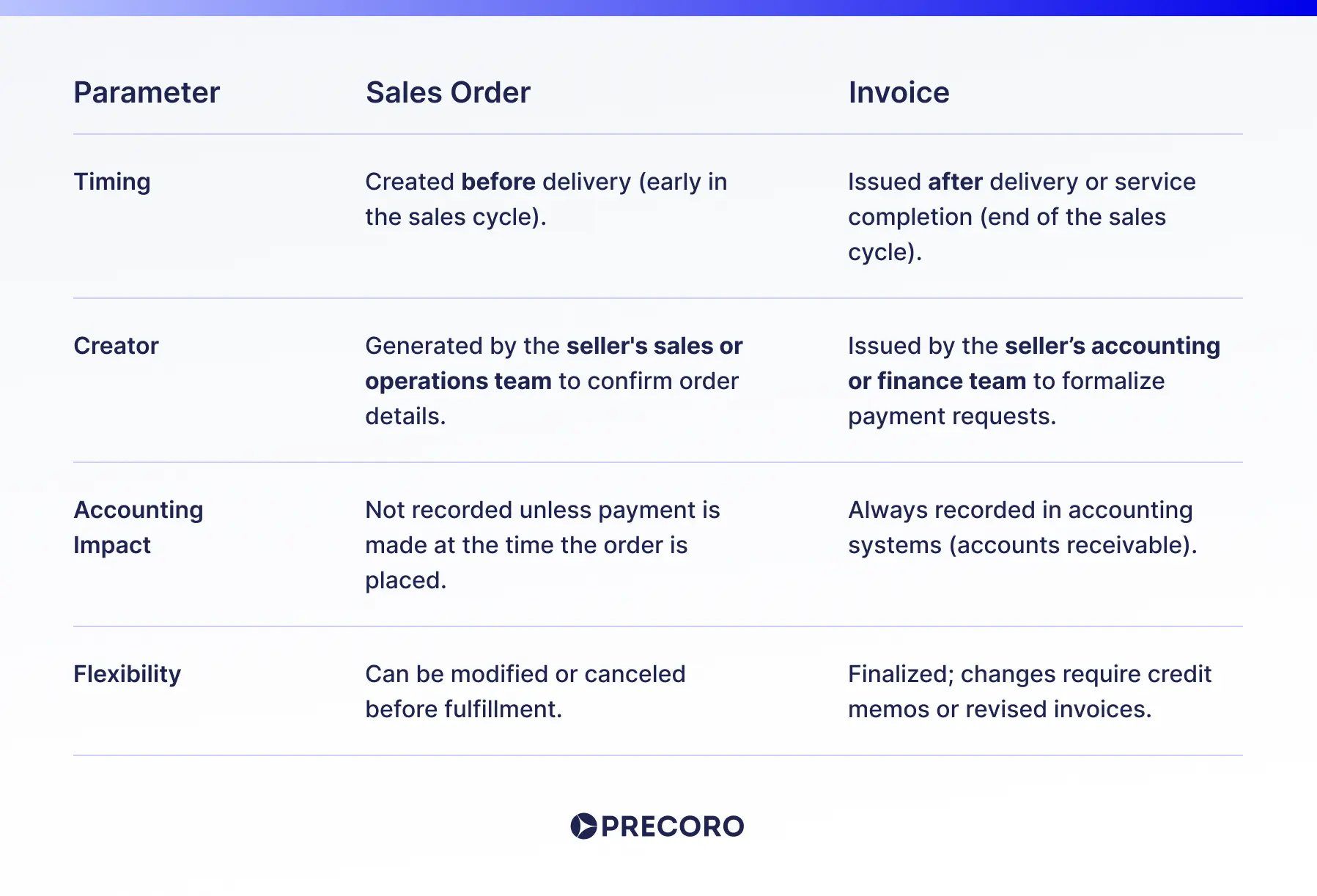
Example: After delivering 50 chairs, the seller issues an invoice with a 30-day payment window. Use an invoice to formalize the payment request post-delivery.
Note!
Essentially, a sales order sets the stage for delivery, while an invoice follows up to secure the payment.
While sales orders and invoices manage the commercial side of a transaction, they don’t always finalize legal ownership. In cases involving one-time asset sales, used equipment, or high-value goods, a printable bill of sale is often used as the legal proof that ownership has officially transferred from seller to buyer. This document becomes especially important for tax reporting, audits, and dispute resolution. In procurement workflows that touch asset transfers, combining operational documents with proper legal documentation ensures full compliance.
Quote vs. Sales Order: How to Choose, When to Use
Quotes and sales orders both relate to sales but differ in intent and timing. A quote is ideal when a buyer wants to know the pricing details for products or services. It's perfect for early discussions or cost comparisons because it doesn't bind either party.
Example: A company might ask for a quote to check if 100 laptops fit within their budget. This is where the quote shines. You can use it to share a cost breakdown without locking into a sale.
On the other hand, a sales order is issued when a buyer agrees to purchase, often after reviewing a quote. It confirms the transaction by detailing products, quantities, and delivery specifics and starts the fulfillment process.
Example: Once a seller approves the quote for 100 laptops, he creates an SO to process the order. A sales order plays a key role in this scenario since it can finalize the deal and ensure both parties are aligned.
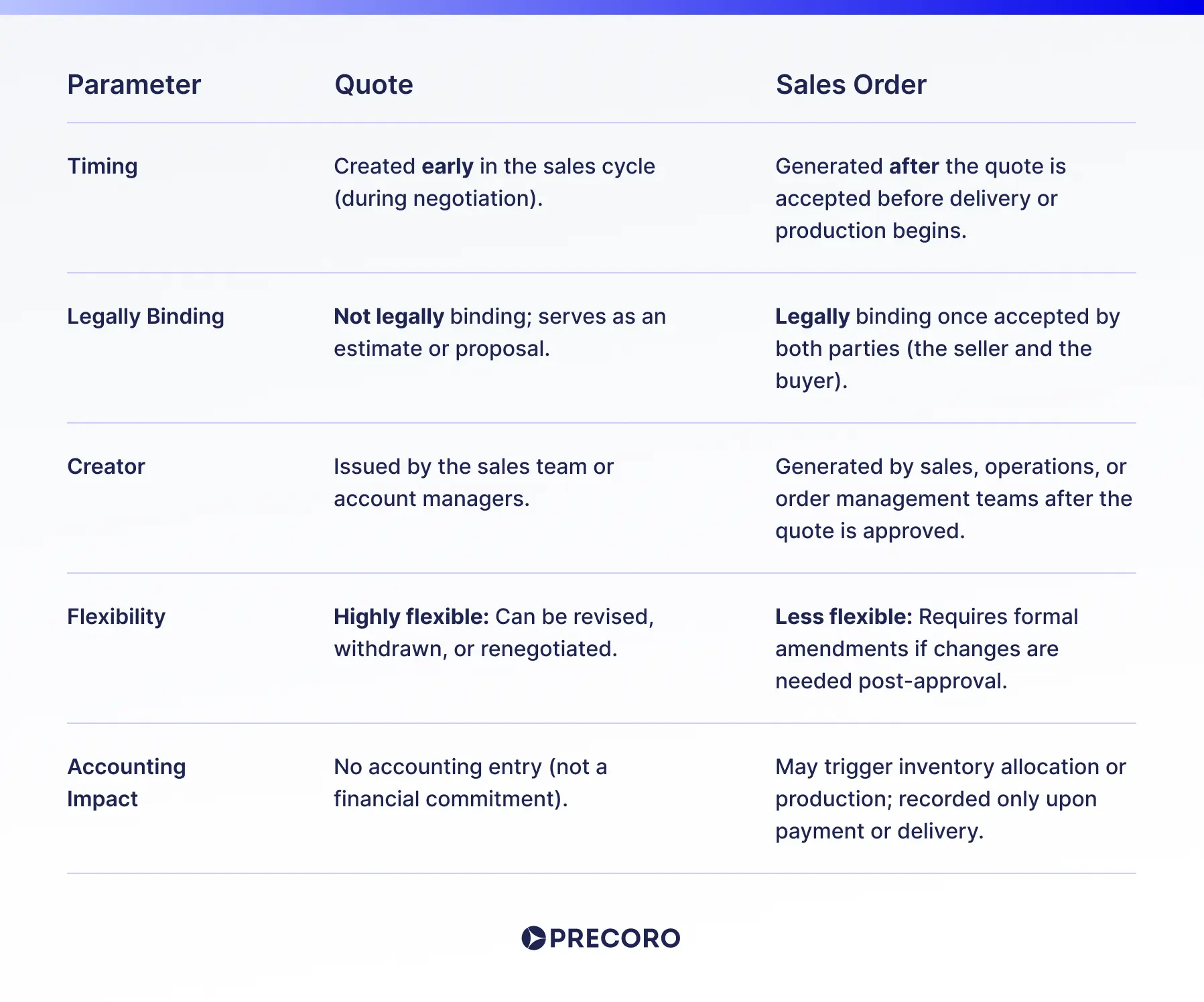
Note!
In short, a quote opens the conversation about pricing, while a sales order seals the commitment and triggers action.
Purchase Orders vs. Sales Orders in Procurement: What Are Their Roles?
In procurement, every transaction has two sides: the buyer’s intent to purchase and the seller’s commitment to fulfill. This is where the concept of sales orders vs. purchase orders shines. They both aim for clarity, accountability, and seamless operations. While these documents complement each other, they serve distinct roles in the purchasing cycle.
Purchase Orders in Procurement: A purchase order is more than just a request—it’s a formal agreement that sets expectations from the start. It details essential information such as product descriptions, quantities, pricing, and delivery terms, providing a clear roadmap for both the buyer and the supplier.
Beyond its role in securing orders, a PO is a valuable procurement tool. It helps businesses manage budgets, track spending, and maintain accountability. If issues arise—such as incorrect shipments or pricing disputes—the PO serves as a reference point to resolve them efficiently. This structured approach makes purchase orders a cornerstone of procurement, offering both control and transparency.
Sales Orders in Procurement: On the other side of the transaction, a sales order (SO) serves as the seller’s confirmation of the purchase order. Once a PO is received, an SO is generated to outline the details of fulfillment—ensuring the right products, correct quantities, and agreed-upon pricing are processed smoothly.
More than just an internal document, a sales order helps sellers manage inventory, plan logistics, and streamline invoicing. It safeguards companies against fulfillment errors and stock discrepancies and is, therefore, essential to order management. When comparing SO vs. PO, the key difference lies in perspective: the PO drives procurement from the buyer’s end, while the SO ensures proper execution on the seller’s side.
Final quote:
Though they serve different functions, sales orders and purchase orders work in tandem to create a smooth, transparent procurement process. Understanding the balance between the two—PO vs. SO—helps businesses optimize purchasing, fulfillment, and overall supply chain planning and efficiency.
By mastering the SO vs. PO workflow, companies can eliminate confusion, reduce errors, and ensure every transaction is handled with clarity and precision.

How Do Sales Order vs. Purchase Order Function Together?
Sales and purchase orders are two sides of a single transaction that create a clear and structured communication loop between buyers and sellers. The sales order vs. purchase order dynamic ensures that both parties remain aligned throughout the transaction process. The process starts when a buyer issues a purchase order—a formal document requesting specific goods or services from a seller.
In response, the seller creates a sales order, which confirms the buyer's request by mirroring these details and serves as the seller's commitment to fulfill the order. This interplay keeps both parties aligned.
For example, imagine a company sending a purchase order for 100 product units at $50 each, with delivery expected by December 1. The seller's sales order restates these specifics, confirming they'll deliver as requested. The purchase order kicks off the transaction, while the sales order completes the loop by triggering fulfillment.
As a result, the sales order vs. purchase order process minimizes errors or misunderstandings. It ensures a seamless flow from request to delivery and strengthens business relationships.
What Are the Types of Sales Orders?
While types of sales orders vary from industry to industry and from deal to deal, the most common ones are:
- B2B (Business-to-Business) sales orders are created when one business sells products or services to another company. These fall into the following categories:
- Supply sales orders are for selling supplies—e.g., office supplies and cleaning supplies—required to operate other businesses.
- Distribution sales orders are for selling products—e.g., groceries and pharmaceuticals—to distributors who sell to consumers.
- B2C (Business-to-Consumer) sales orders are initiated by businesses selling directly to individual customers. B2C sales orders are more affected by brand, pricing, and emotional factors than B2B orders.
- Product sales orders are for physical, tangible things that must be made, assembled, or delivered out of stock.
- Service sales orders are associated with services (tangible or intangible) rendered by the seller to the buyer, such as consulting, software, and maintenance.
- Cash sale orders, where the customer pays cash immediately and takes delivery immediately.
- Rush orders must be delivered on the same day or in a shorter-than-average lead time.
- Scheduling agreement orders describe a schedule for delivering specific quantities over a given period.
- Third-party orders involve deliveries to the customer via a third-party vendor.
Example of a Sales Order
Seller Information
- Company Name: Office Supplies Inc.
- Address: 123 Main Street, Anytown, USA
- Phone: 555-1234
- Email: info@officesuppliesinc.com
Customer Information
- Company Name: ABC Company
- Address: 456 Elm Street, Othertown, USA
- Phone: 555-5678
- Email: procurement@abccompany.com
Order Details
- Sales Order Number: SO-001
- Date: March 26, 2025
- Delivery Address: Same as customer address
- Delivery Date: April 2, 2025
- Payment Terms: Net 30 days
- Shipping Method: Ground shipping
Items Ordered
Totals
- Subtotal: $250.00
- Taxes (10%): $25.00
- Shipping: $15.00
- Total Amount Due: $290.00
Additional Notes
- Payment is due within 30 days of the invoice date.
- Please allow 5-7 business days for delivery.
Signatures
- Seller: _________________________ Date: __________
- Customer: _________________________ Date: __________
What Are the Types of Purchase Orders?
Among the most common types of purchase orders are the following:
1) Standard Purchase Order (SPO): This document is perfect for one-time purchases. It details specific goods, amounts, and due dates. Once an order is fulfilled, the transaction is complete.
For instance, you need to order 50 laptops for an office. The PO specifies the laptops, prices, and delivery dates.
2) Blanket Purchase Order (BPO): This document is used for repeated purchases from the same supplier over a certain period. It sets forth the terms for several deliveries up to a maximum amount, and the buyer calls for deliveries as needed.
For example, a school buys 10,000 paper reams for a year. The BPO sets the price and allows for monthly deliveries.
3) A Contract Purchase Order (CPO) is a long-term agreement that allows the purchasing team to make purchases under predetermined terms. Subsequent orders reference the master contract.
If a factory procures steel annually, the CPO aligns with the contract, and specific purchase orders outline the quantities.
Example of a Purchase Order
Purchase Order Number: PO-2025-00345
Date Issued: March 26, 2025
Delivery Date: April 10, 2025
Buyer Information
Company Name: Horizon Tech Solutions
Address: 123 Innovation Drive, Suite 400, Austin, TX 78701
Contact: Jane Carter
Email: jane.carter@horizontech.com
Phone: (512) 555-7890
Seller Information
Company Name: Apex Supplies Co.
Address: 456 Commerce Lane, Denver, CO 80202
Contact: Mark Thompson
Email: sales@apexsupplies.com
Phone: (303) 555-1234
Order Details
Subtotal: $2,100.00
Tax (8%): $168.00
Shipping: $50.00
Total Amount: $2,318.00
Terms and Instructions
- Payment Terms: Net 30 days from invoice receipt
- Shipping Instructions: Deliver to Horizon Tech Solutions warehouse, standard ground shipping
- Notes: Please include packing slips with the order and confirm receipt of the PO within 48 hours
Authorized By
Name: Jane Carter
Title: Procurement Manager
Signature: [Signature placeholder]
Frequently Asked Questions
Purchase orders and sales orders are both formal documents that outline product descriptions, quantities, and agreed-upon prices. They establish clear transaction terms and help businesses track orders, manage inventory, and maintain accurate financial records.
The buyer sends the seller a purchase order and specifies the goods or services they want to buy. Once the order is fulfilled, the seller sends an invoice asking for payment for the delivered goods or services. Essentially, the purchase order initiates the transaction, and the invoice charges the buyer.
Sales orders can fail due to errors in product details, delivery dates, quantities, or addresses. Additionally, late processing and incorrect pricing can cause issues. To avoid these problems, ensure accurate order details, manage inventory efficiently, and communicate clearly with customers.
The buyer issues a purchase order to acquire goods or services from a seller. In response, the seller generates a sales order to confirm acceptance of the buyer's request and document the sale.
No, you can't use a PO as an invoice. An invoice is a seller's request for payment, not a buyer's request for goods or services. It includes payment due dates and seller billing details, which are not part of a PO. Mixing up an invoice and a PO can be risky and lead to confusion and potential legal issues.
No, you can't use an SO as an invoice. While an SO confirms the sale and outlines order details, its purpose differs from an invoice's. Typically, invoices are issued separately and entail billing information and instructions on payment.
Wrapping Up
A purchase order sets expectations and requests items from a supplier. In contrast, a sales order confirms delivery and ensures the order is fulfilled. These documents are more than just paperwork; they lay the groundwork for smooth and efficient business transactions.
In combination, sales order vs. purchase order define roles, simplify logistics, and prevent miscommunication between buyers and sellers. As a result, businesses improve efficiency, strengthen supplier relationships, and reduce costly mistakes.
Want to run a seamless operation? Don't settle for less; start with the right order.



